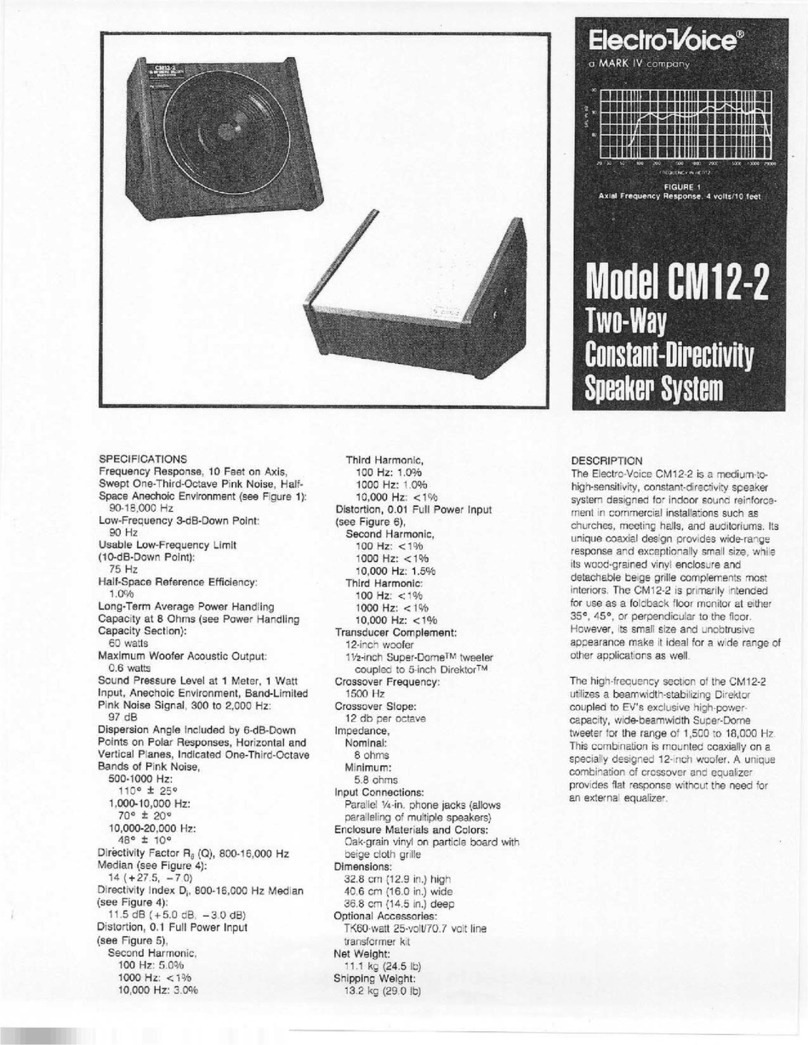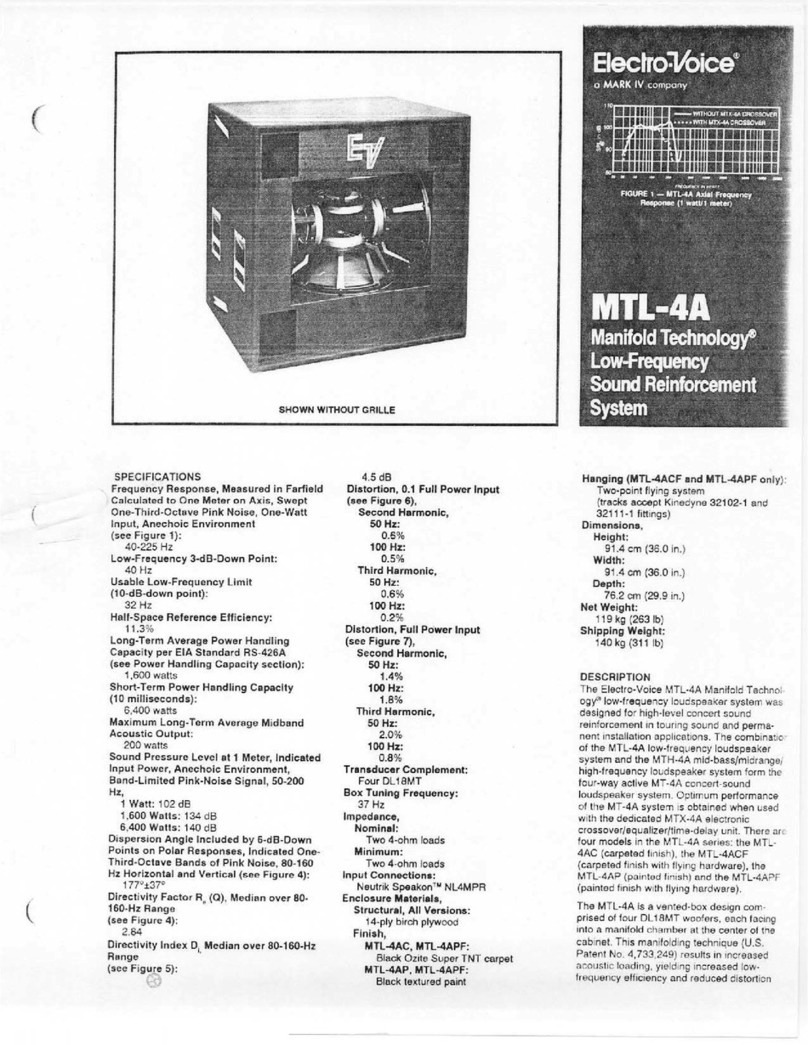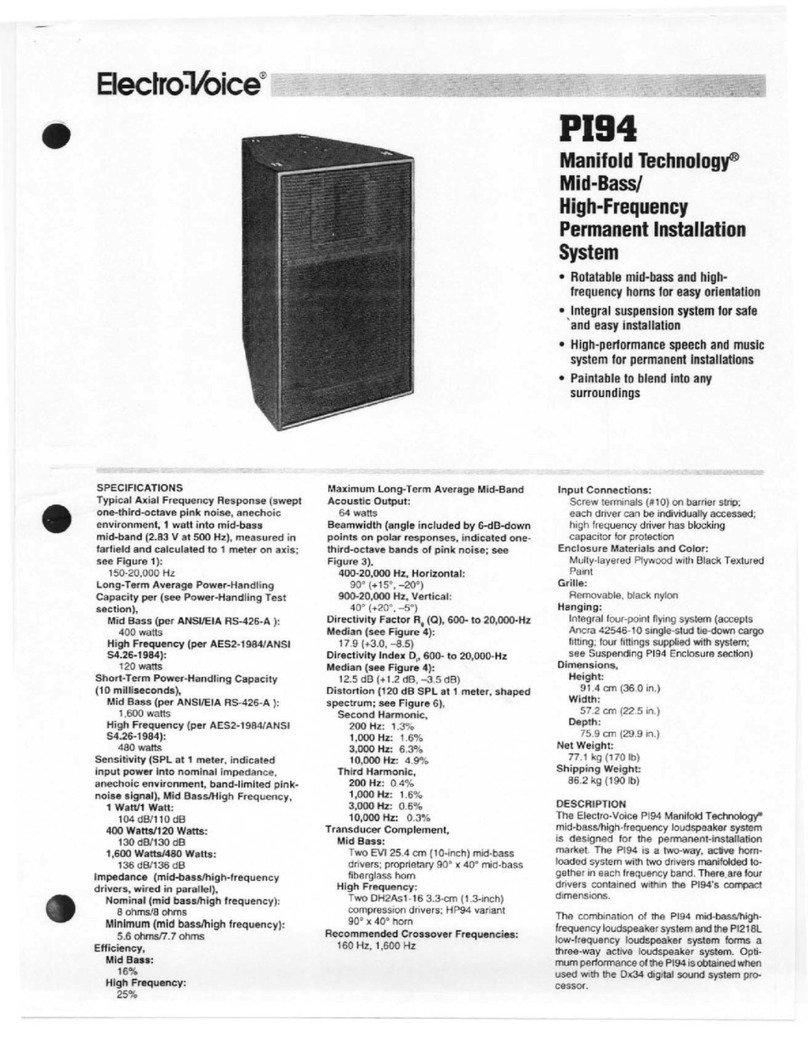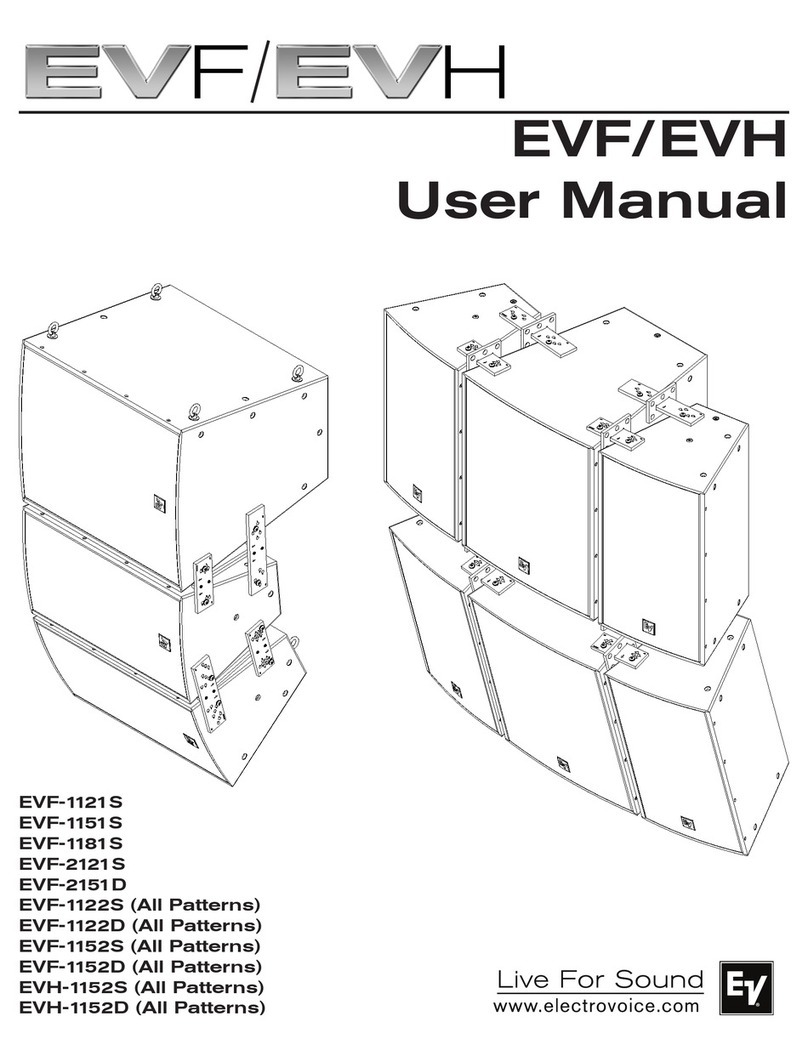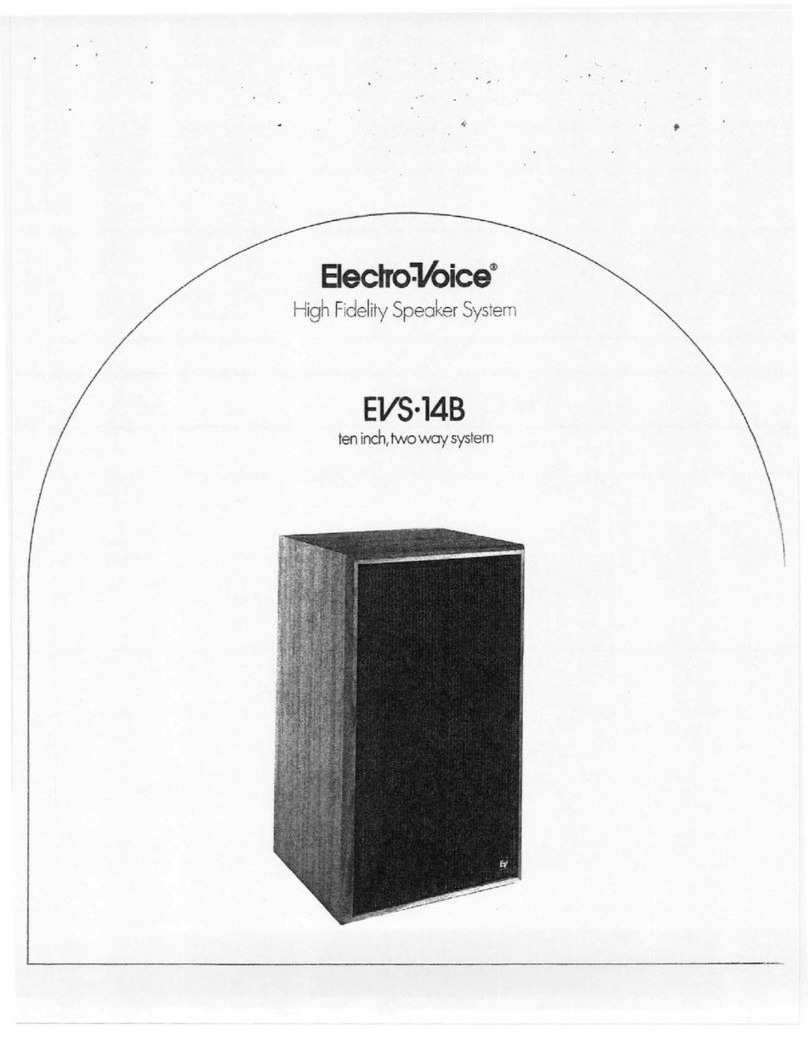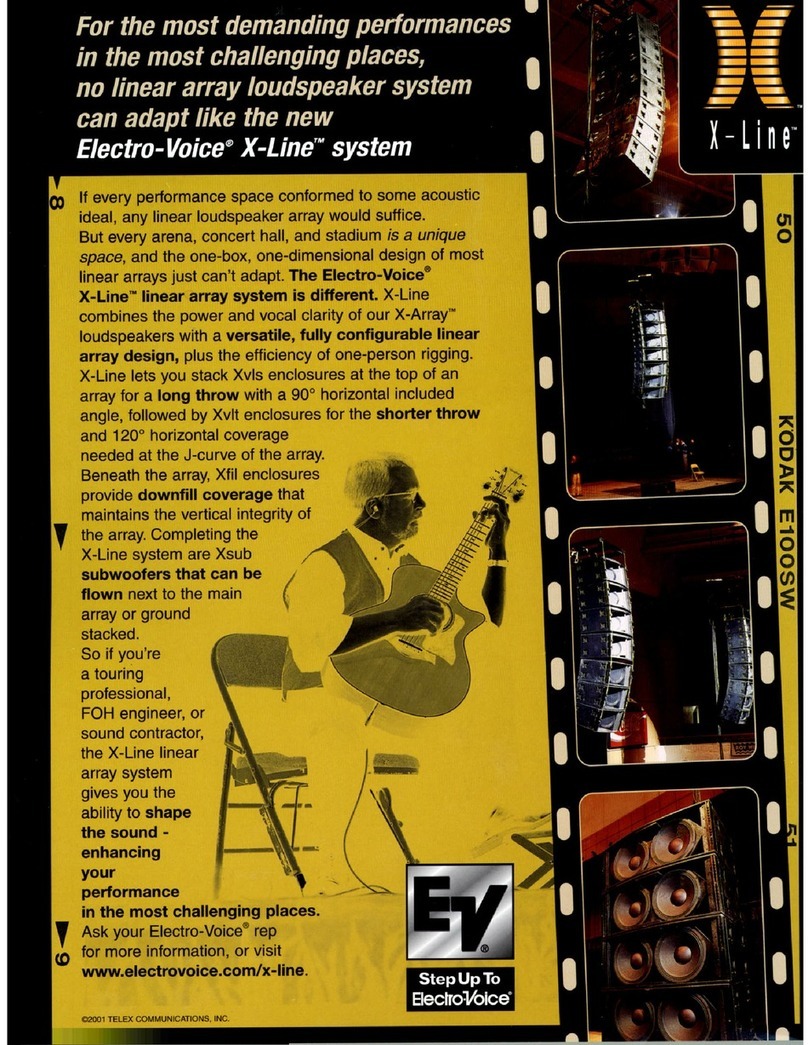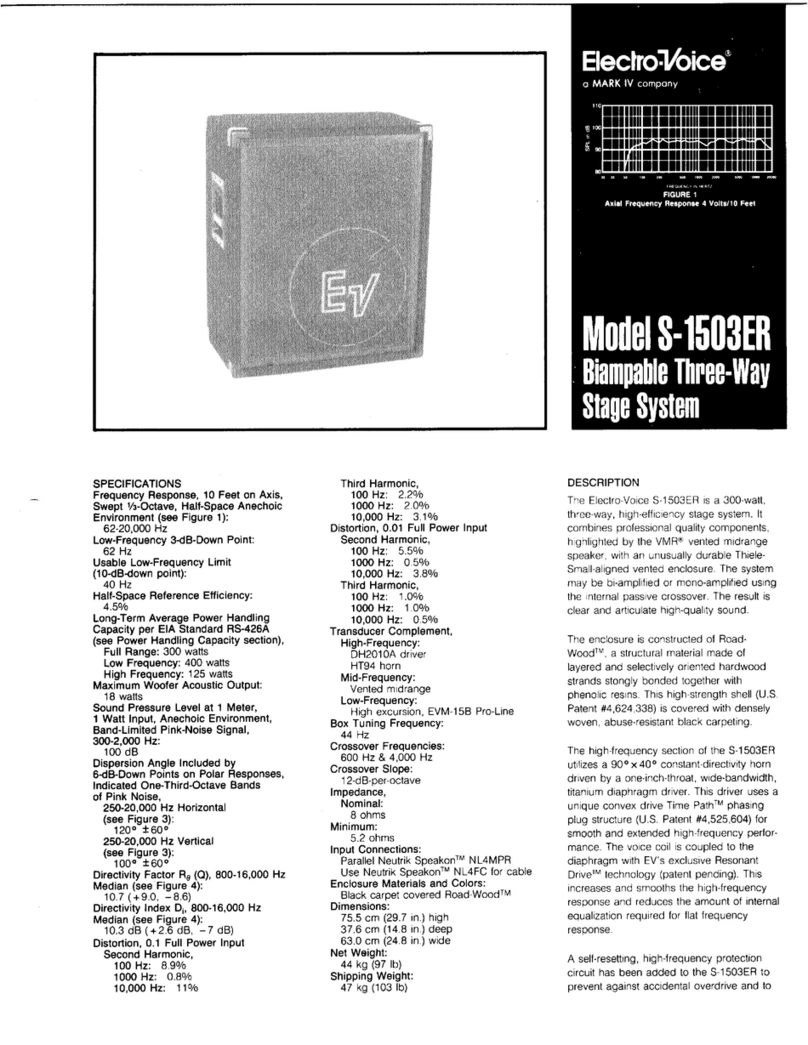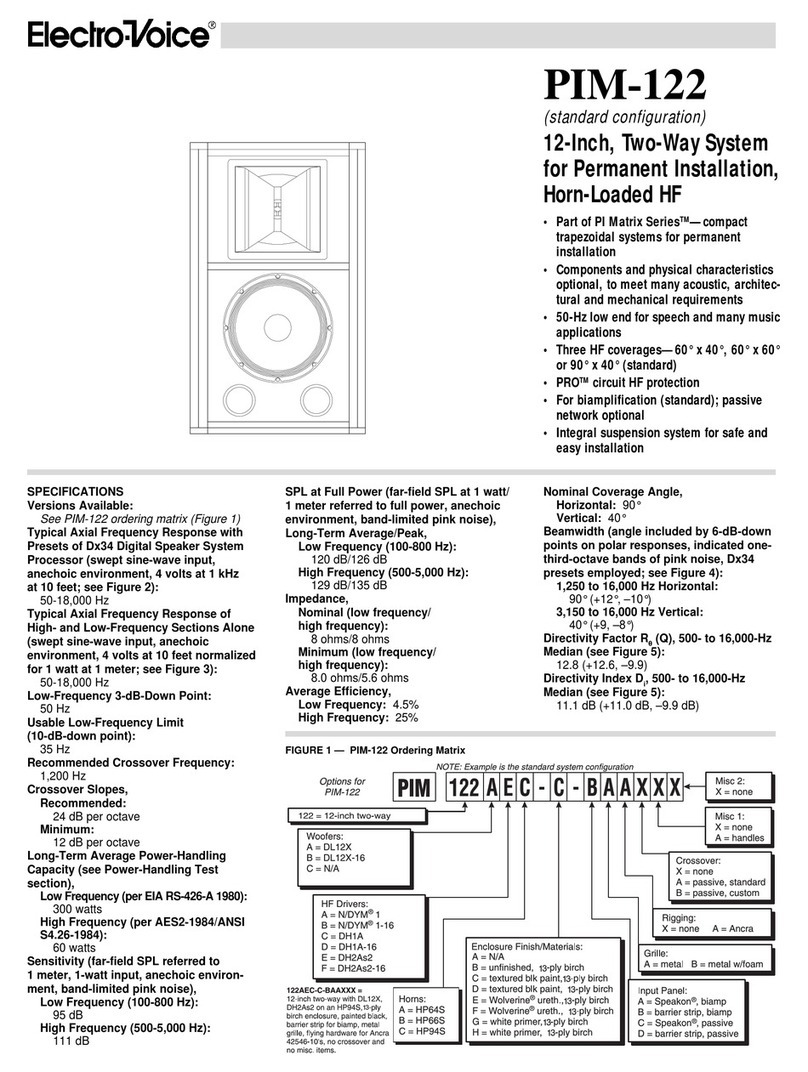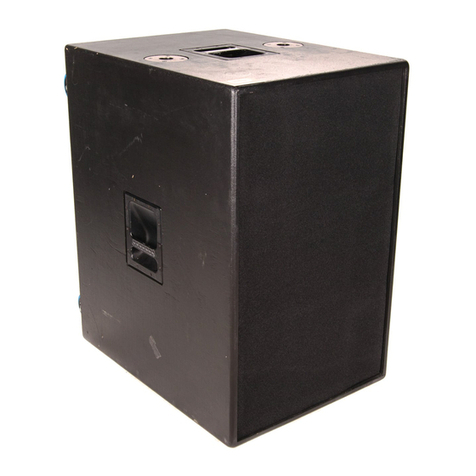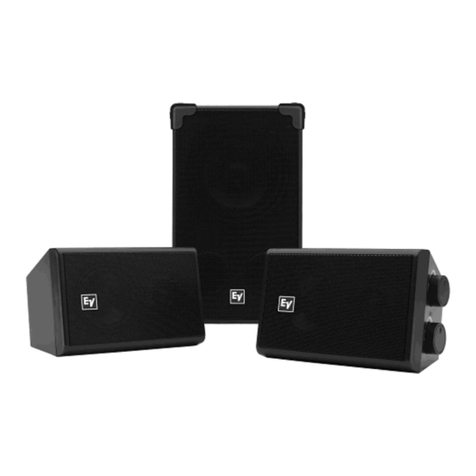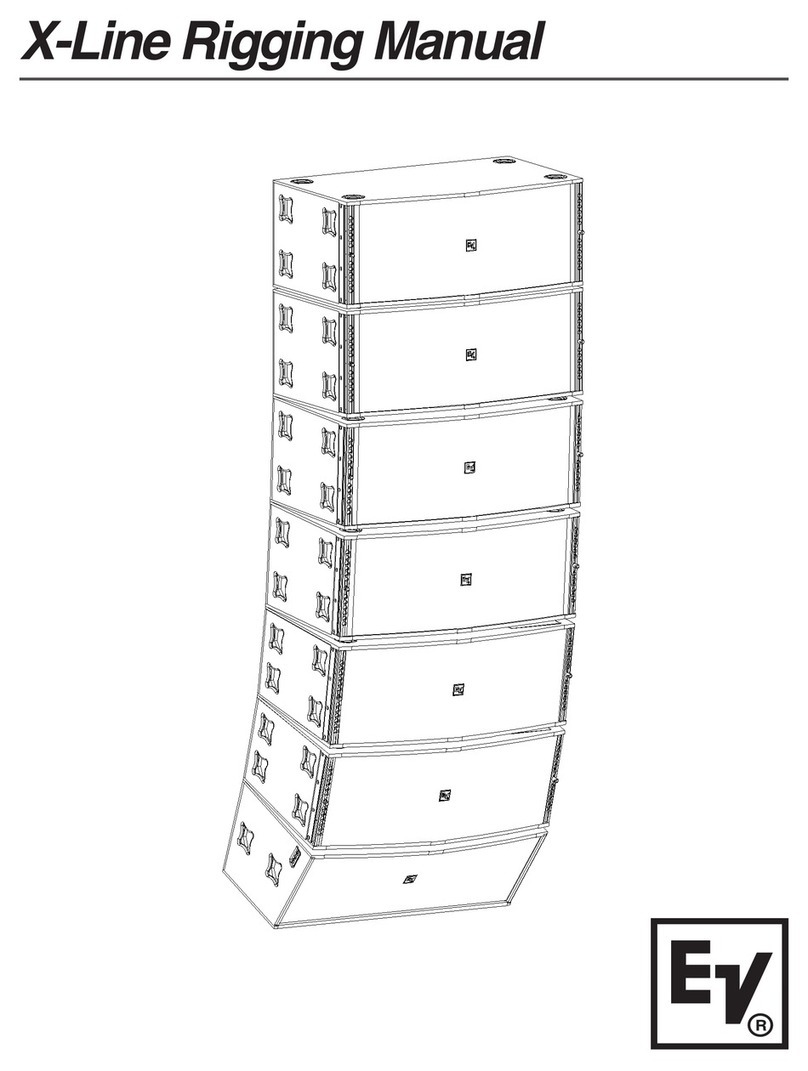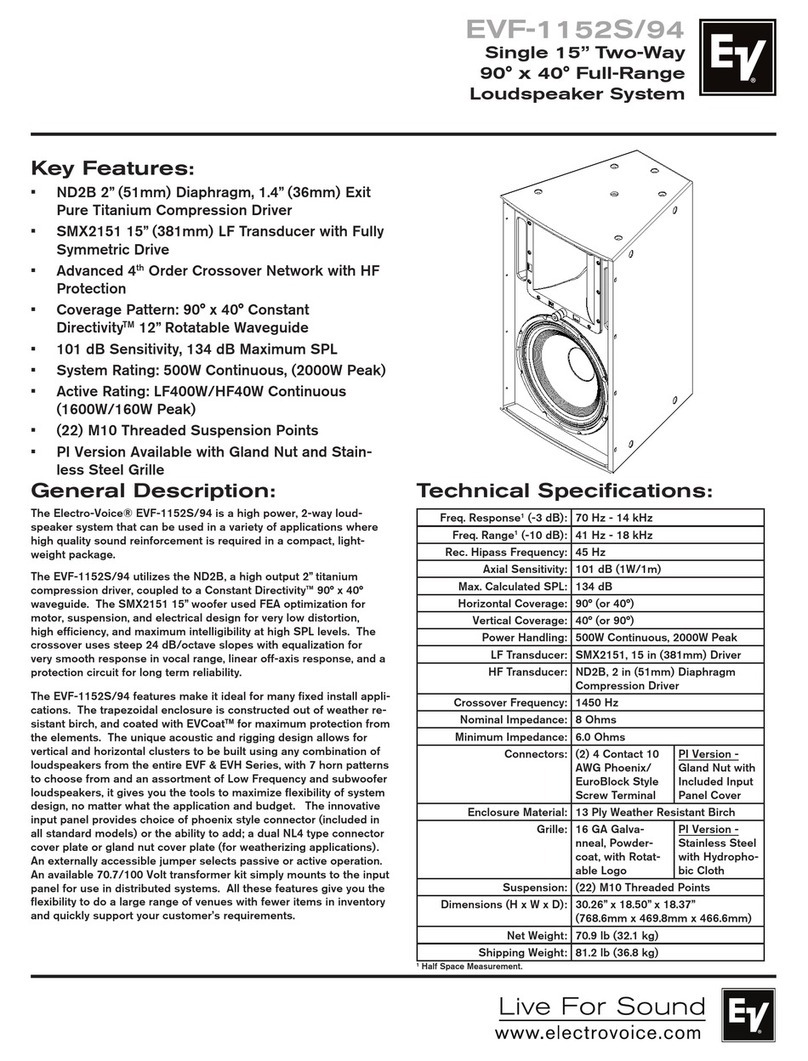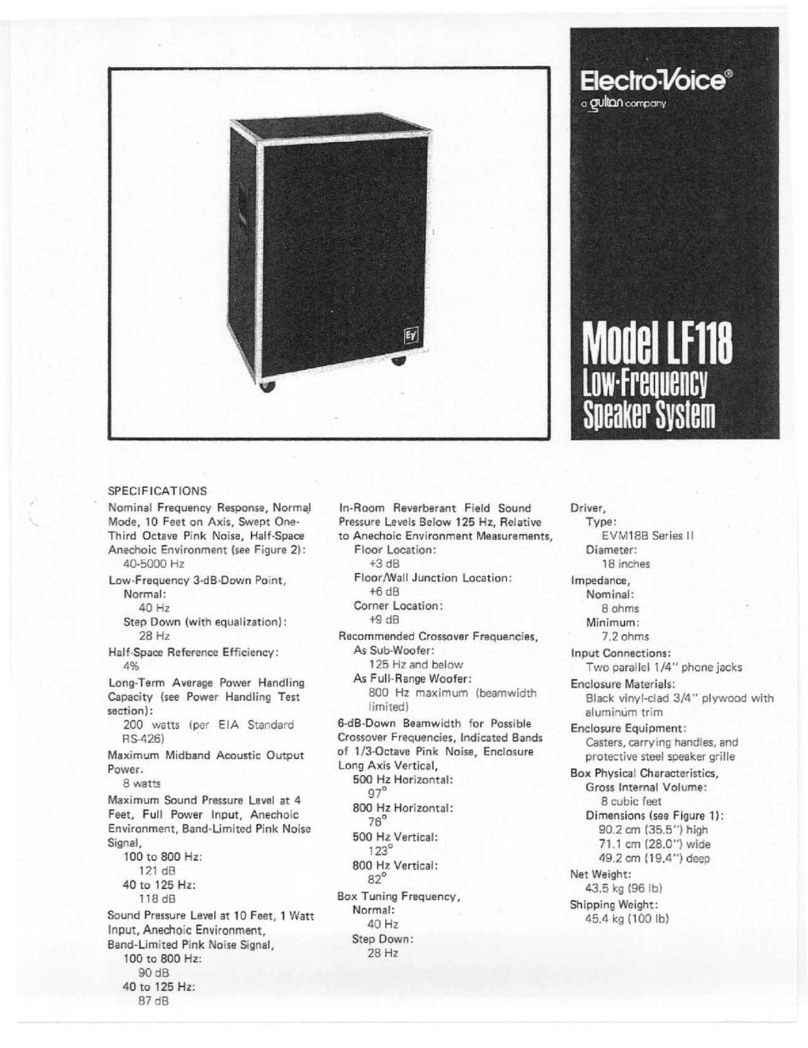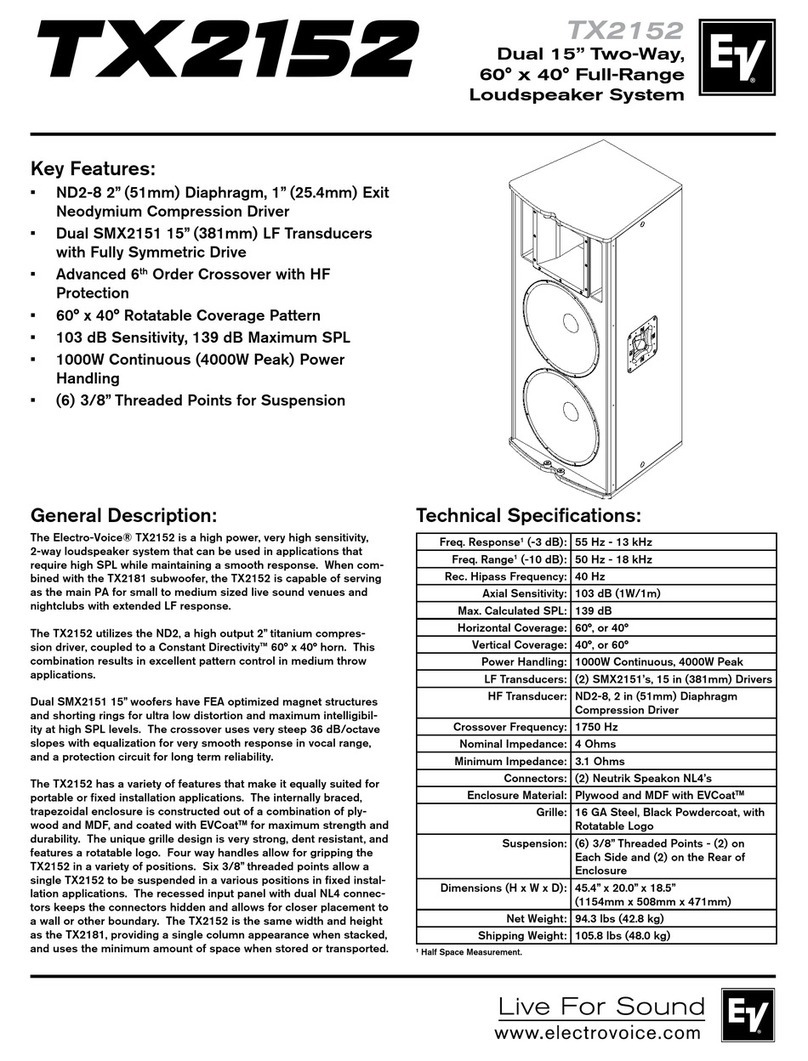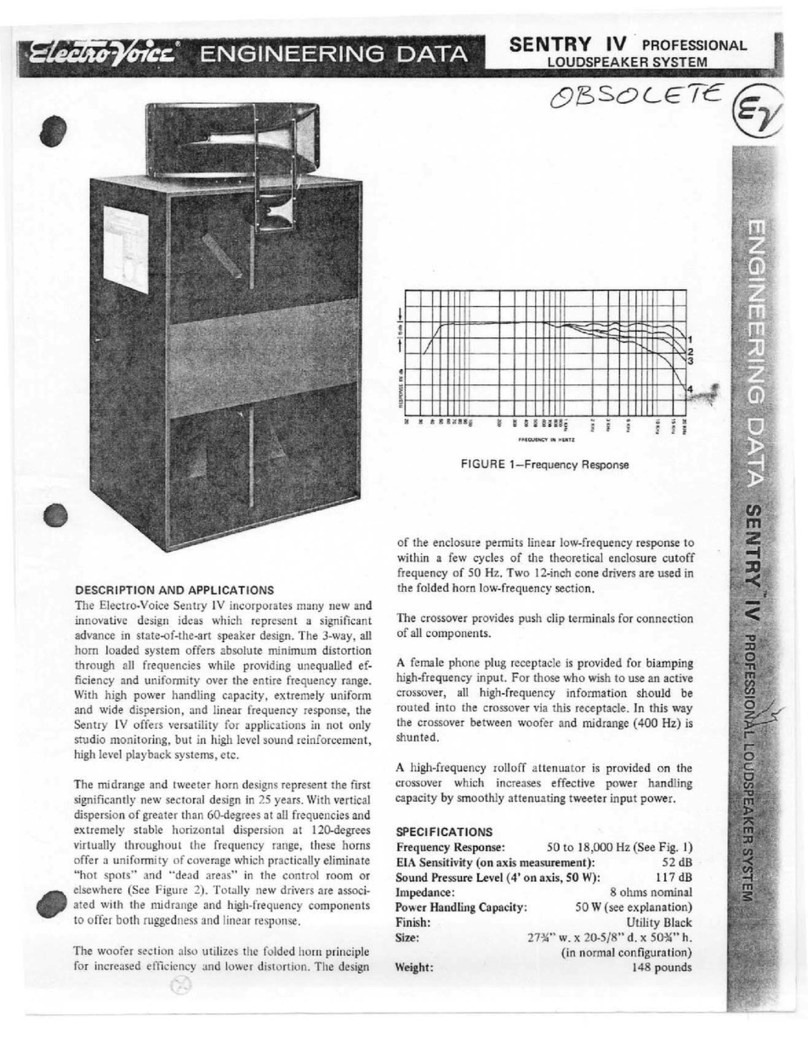Speaker Systems for Background Music and Paging page 4
Electro-Voice Installed Sound Technical Guide
requiring you to add another zone to the system. Electro-Voice offers the
MA/MR series of rack-mount or shelf-mount mixer/amplifiers, receivers and
power amplifiers that enable you to offer a painless quote for the requested
change, and come out a hero. You can even avoid the additional cost of
installing a volume control in the new zone by putting the amplifier on a
shelf in the zone.
Similarly, it may make sense to pull a couple of extra cable pairs (both
speaker lines and mike lines) when making your home runs. That way, if
there’s a base that wasn’t covered in the specification, you can make it up
onsite. The practice also facilitates expanding the system at a later date.
Be sure that the floor plans you use are up-to-date, and keep
communications open with the client. Particularly if you are limited to
using existing wiring, you need to know if the client’s plans for space usage
will remain the same. Otherwise, you may end up with a real headache—
like having the emergency room announcements directed to the pediatric
ward
Finally, it is vitally important to be sure that you know who in the client’s
company is authorized to make decisions when questions arise on the job
site. If the building manager tells your installers to put the amp racks in the
basement you don’t want the owners calling you and insisting that they
should have been in the second floor office
Standardizing for Profitability
One of the best strategies that we can recommend for success in contracting
is to standardize your operations wherever possible. Settle on a few basic
system designs that can be modified to cover a wide variety of circumstances
and then educate your sales staff about them. Develop standard pricing
calculations, in cost per hour, for all of the basic labor items: putting in a
can, pulling a cable pair, installing a plenum run, and so on. Rather than
trying out a new, whiz-bang esoteric product on each installation, stock a
carefully selected complement of proven performers and use them
consistently. Often you can achieve significant savings by reducing the
number of suppliers whose products you use. When you use several
suppliers, you encounter differing lead times, minimum order quantity
requirements, freight policies and payment terms that complicate your
ability to respond quickly and consistently to demands from your customers.
These are “hidden” overhead costs that compromise your ability to generate
a profit.
©2002 Telex Communications, Inc.
Read more about
MA/MR Series
amplifiers:
MA-1005B
MA-355B
MA-605B
MR-355C receiver
